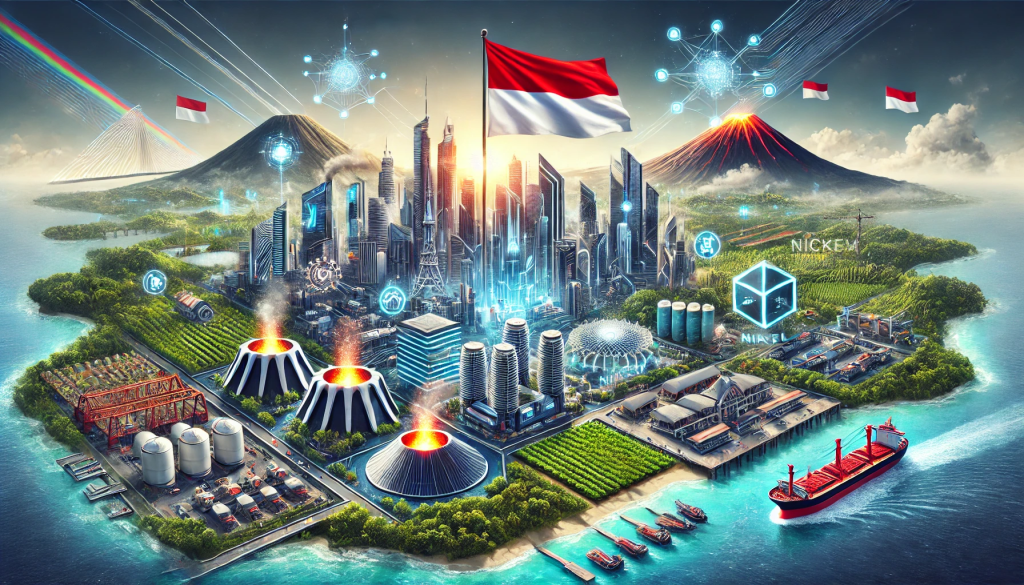Indonesia remains one of Southeast Asia’s most attractive investment destinations. In the first quarter (Q1) of 2025, the country drew impressive foreign direct investment (FDI) inflows totaling US$12.6 billion (Rp200.3 trillion). However, what made headlines wasn’t just the size of the investments—but who they came from. Notably absent from the top five investor countries was the United States, traditionally a major economic player in the region.
Let’s take a closer look at what’s behind the shifting dynamics of foreign investment in Indonesia, who the key players are, and what it means for Indonesia’s economic future.
Singapore Leads the Pack Once Again
For years, Singapore has been the top source of foreign investment in Indonesia, and Q1 2025 is no exception. The city-state invested a staggering US$3.4 billion into Indonesia, accounting for a significant portion of total FDI.
Singapore’s strong position can be attributed to several factors: its role as a regional financial hub, proximity to Indonesia, and tax-friendly structures that often serve as a springboard for multinational investments into Southeast Asia. Many Singapore-based holding companies channel global funds into Indonesian ventures, from property to fintech and manufacturing.
This strong investment corridor reflects Indonesia’s ongoing efforts to improve its regulatory frameworks and offer incentives for strategic sectors, aligning with Singapore’s appetite for scalable and high-growth opportunities.
China and Hong Kong Strengthen Ties
Coming in second and third place are China and Hong Kong, with investments totaling US$1.9 billion and US$1.4 billion respectively. This signals a continued deepening of economic ties between Indonesia and Chinese-speaking economies, particularly in infrastructure, mining, and renewable energy.
China’s Belt and Road Initiative (BRI) has spurred a number of large-scale infrastructure projects in Indonesia, ranging from toll roads to high-speed rail. At the same time, Chinese firms are increasing their presence in the battery, electric vehicle (EV), and nickel industries—critical elements of Indonesia’s downstream industrialization strategy.
Hong Kong, while smaller in population, acts as a gateway for mainland capital and has a strong portfolio in banking, fintech, and real estate projects throughout the archipelago.
Japan and Malaysia Round Out the Top 5
Japan continues to be a major source of foreign investment in Indonesia, with Q1 investments totaling US$0.9 billion. Japanese firms have long been involved in the automotive and manufacturing sectors and are now pivoting toward digital technology and green energy.
Malaysia, meanwhile, came in fifth with US$0.7 billion in investments. Much of this inflow was directed toward industrial zones, palm oil processing, and Islamic finance—a shared area of cultural and economic synergy.
Both nations benefit from historical ties with Indonesia and have ramped up bilateral trade and investment frameworks to encourage deeper economic cooperation.
U.S. Absence: A Strategic Recalibration?
One of the most surprising revelations of Q1 2025 is the absence of the United States from the list of top five foreign investors in Indonesia. Traditionally, the U.S. has played a strong role in Indonesia’s tech, energy, and financial sectors.
There are several possible reasons for this shift. First, political uncertainty due to the re-election of Donald Trump may have prompted U.S. companies to adopt a wait-and-see approach toward emerging markets. Second, the U.S. is currently reshoring and prioritizing domestic supply chains, particularly in critical sectors like semiconductors and EV batteries.
Nonetheless, major American players such as Google, ExxonMobil, and Procter & Gamble continue to operate in Indonesia—though their latest investments may not have registered within this quarter’s data.
Strategic Sectors Continue to Attract Capital
Indonesia’s government, under President Joko Widodo and with support from the Ministry of Investment (BKPM), has made it a priority to channel foreign investment in Indonesia into sectors that provide long-term economic benefits.
These include:
- Green energy: As Indonesia aims to reach 23% renewable energy mix by 2025, projects in solar, hydro, and geothermal power have become magnets for foreign capital.
- Digital economy: E-commerce, data centers, and AI infrastructure are booming areas, especially given Indonesia’s large and young population.
- Downstream industries: From nickel refining to EV battery production, the government is pushing value-added processing rather than just raw exports.
The implementation of the Omnibus Law has also made it easier for foreign investors to do business, streamlining permits and reducing red tape.
Implications for Indonesia’s Investment Climate
The strong performance of foreign investment in Indonesia in Q1 2025 reinforces the country’s resilience and appeal amid global economic volatility. With ASEAN’s growing importance and Indonesia’s G20 status, investors are increasingly viewing the archipelago as a key growth engine.
However, the drop in U.S. investment also highlights vulnerabilities. As global geopolitics continue to shift, especially in the Asia-Pacific region, Indonesia must ensure it maintains a neutral stance that encourages broad-based participation from multiple global partners.
Diversification, transparency, and commitment to sustainability will be key pillars in ensuring continued investor confidence.
Read More






 Friday, 21-11-25
Friday, 21-11-25







